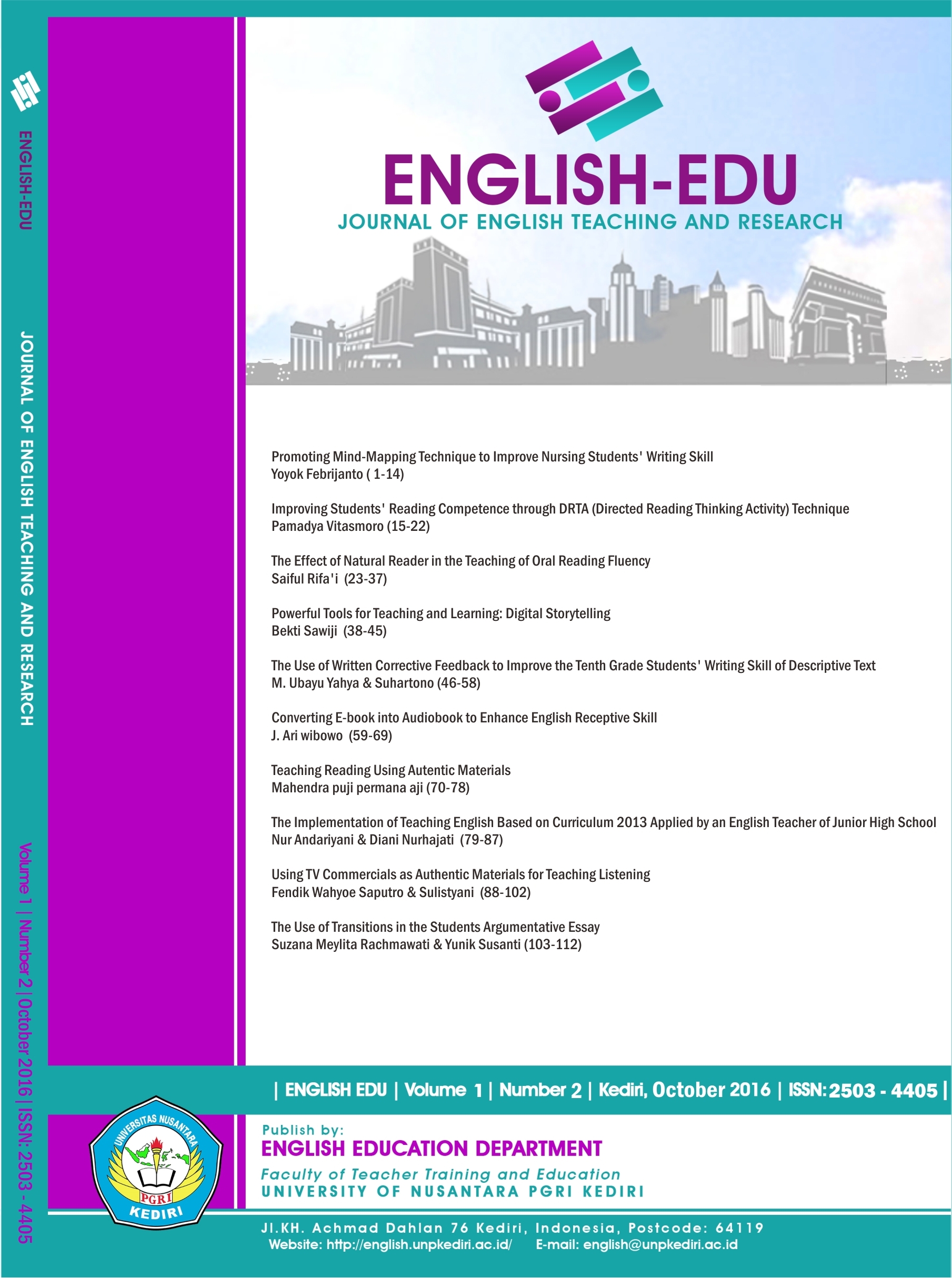THE EFFECT OF NATURAL READER IN THE TEACHING OF ORAL READING FLUENCY
DOI:
https://doi.org/10.29407/jetar.v1i2.476Abstract
Oral reading fluency is important skill that all readers need to develop, because those who has oral reading fluency are assumed to have the skill of reading comprehension and accuracy in delivering the speech. Natural Reader software is a professional text reader that converts any text into spoken words. In this quasi-experimental research applying non-randomized control group design pretest-posttest, the data used were interval data because they were taken from students’ scores of oral reading fluency test.This research was conducted in the English department of a College of Teacher Training and Education in Blitar. Group (1) consisted of 32 students taught using the natural reader software (experimental group) and Group (2) consisted of 35 students taught without using the natural reader software (control group). The control group simply attended in their ordinary classroom without using natural reader software and participated in instruction programs assigned by the lecturer in the classroom. The experimental group attended in the computer lab and listened to the text as it was read by natural reader software. This study revealed that the Natural Reader software could significantly prove that the students was able to read more accurately and at a more appropriate pace using instruction using natural reader software. By using natural reader software, the student could easily have frequently chances to listen the words read by the native speakers as a reader model at normal speed and repeat the copied reading text up to they were able to read fluently as the reader model read the text.
Downloads
Downloads
Published
Issue
Section
License
Authors who publish with this journal agree to the following terms:
- Copyright on any article is retained by the author(s).
- The author grants the journal, the right of first publication with the work simultaneously licensed under a Creative Commons Attribution License that allows others to share the work with an acknowledgment of the work’s authorship and initial publication in this journal.
- Authors are able to enter into separate, additional contractual arrangements for the non-exclusive distribution of the journal’s published version of the work (e.g., post it to an institutional repository or publish it in a book), with an acknowledgment of its initial publication in this journal.
- Authors are permitted and encouraged to post their work online (e.g., in institutional repositories or on their website) prior to and during the submission process, as it can lead to productive exchanges, as well as earlier and greater citation of published work.
- The article and any associated published material is distributed under the Creative Commons Attribution-ShareAlike 4.0 International License








 Article template
Article template



